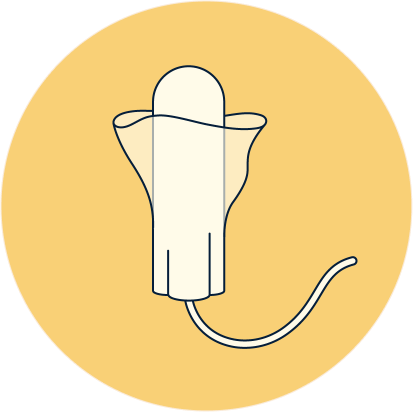If you’ve ever used a tampon – or read the back of a tampon box – you’ve probably heard of Toxic Shock Syndrome (TSS). This a rare yet potentially fatal bacterial infection is associated with tampon use. However, few people are aware of a much more common issue with tampons: fibre loss.
Do tampons leave fibres behind?
Fibre loss happens when a tampon sheds inside the vaginal canal, leaving behind small pieces of filament (fuzzy bits that look like faux fur). Most fibre loss is caused by the friction of inserting and removing tampons.
Does tampon shedding sort itself out?
Although the vagina is a self-cleaning organ, it's not able to flush out pieces of tampon left inside. These can end up near your cervix and have been known to cause pathogen colonisation and vaginal infections like thrush and BV – two common (yet equally unpleasant) conditions.
What experts say about tampon fibre shedding
Tampon fibre loss is such a common issue that doctors and nurses often have to remove fibre build-up in patients before being able to conduct exams like cervical screening.
"Fibre loss is why I stopped recommending tampons to my patients," says Dr. Dimitar Georgiev, an OBGYN with 20 years of practice. "In fact, I actively dissuade them from using tampons," he tells Daye.
The risk of TSS and microbiome issues
“The issue with tampon fibre shedding is that the potential breeding grounds remain after the tampon is removed, giving bad bacteria more of a chance to get established,” adds Dr. Harry Baxter, Daye’s Deputy Head of Research. “This impacts TSS risk as well as issues with your vaginal microbiome.”
“As with anything vaginal microbiome-related, there isn't a panacea, but as we learn more and more about ‘good’ and ‘bad’ vaginal bacteria, we are learning more and more about the importance of products that don't give bad bacteria any head-starts.”
Vaginal pH imbalances
“My concern as a gynaecologist is that the residual fibres are a nidus will absorb blood and fluid which was intended to be expelled along with menses,” adds Dr. Melanie Bone, an OBGYN and member of Daye’s Medical Advisory Board. “This might impact the microbiome, the pH, and the delicate bacterial balances in the vagina.”
How to test whether your tampon is shedding
How do you know if your tampon is guilty of fibre loss? Dip an unused tampon in a glass of water, wait a few moments, and you’ll probably start to see fibres falling away from the tampon. To check whether an organic tampon sheds, rub the surface and you’ll see how even the slightest pressure will cause fibres to flake off.
Think about how long tampons usually stay inside of your vaginal canal… Yeah, not cute.
What is a protective sleeve?
When tampon manufacturers caught wind of the fact that fibre loss was becoming a concern, some (not all) started adding a protective sleeve to their tampons.





